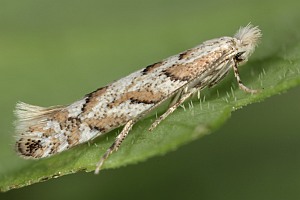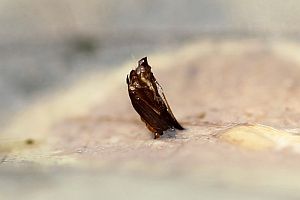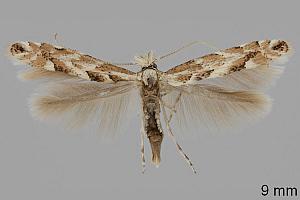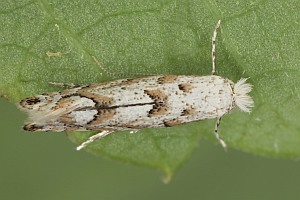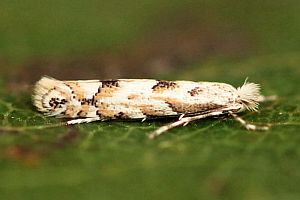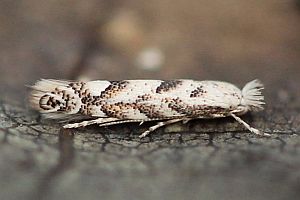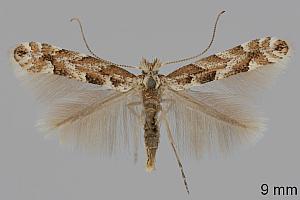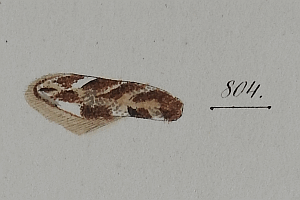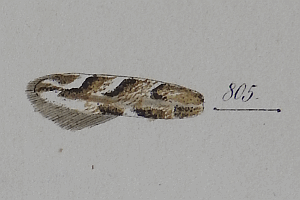

 +22Kontinente:EUAS
+22Kontinente:EUAS1. Lebendfotos
1.1. Falter
1.2. Puppe
2. Diagnose
2.1. Männchen
2.2. Erstbeschreibung
Darin indizierte Abbildungen
3. Biologie
3.1. Nahrung der Raupe
- [Salicaceae:] Populus nigra (Schwarz-Pappel)
- [Salicaceae:] Populus tremula (Zitter-Pappel, Espe, Aspe)
- [Salicaceae:] Populus alba (Silber-Pappel)
- [Salicaceae:] Populus x canescens (Grau-Pappel)
- [Salicaceae:] Populus simonii (Birken-Pappel, Simons-Pappel, Chinesische Säulen-Pappel)
- [Salicaceae:] Salix alba (Silber-Weide)
- [Salicaceae:] Salix fragilis (Bruch-Weide)
Die Art miniert unterseitig an Schwarz-Pappel (Populus nigra), Zitter-Pappel (P. tremula) und Silber-Weide (Salix alba) [Bradley, Jacobs & Tremewan (1970)]. Auf [bladmineerders.nl] ist zu lesen: "Populus canescens, tremula. Delplanque (1998a), Kollár (2007a), and Kollár & Hrubík (2009a) additionally mention P. alba, nigra, and simonii." Weiden spielen hier mit Sicherheit nur eine Ausnahme, bei den teilweise alten Angaben ist auch Fehlbestimmung des Falters nicht auszuschließen.
Tozlu et al. (2002) berichten aus dem nordöstlichen Anatolien über ein schadhaftes Auftreten in Espen-Kiefern-Mischwäldern in 1800-2400 m Höhe. Sie betonen: "The climate is very cold and snowy during the winter, and warm and dry during the summer season". Sie stellen weiter fest: "Phyllonorycter apparella, which causes important damage to the leaves of trembling aspen in the Sarıkamış forest area, has been present at epidemic levels forthe last 6-7 years. This study was conducted to determine the nature of this pest and to study its biology." [...] The number of eggs per 2 cm² was 27-85 (47) on upper surfaces and 8-38 (22) on lower surfaces. The earliest eggs were laid on June 15 in 1996, and on June 10 in 1997; almost all of them hatched by July 10 and July 8, respectively. The duration of eclosion was approximately 10-12 days. The sap-feeding larvae generally fed in the mines located on the underside of the leaves. They enlarge mines in all directions and the leaves become blotchy. After 2 or 3 days of feeding, a mine was 12 mm in diameter; toward the end of July it had grown to - 7 mm in diameter (Fig. a). Each mine contained only one larva, and a single leaf had up to 26 mines. However, some larvae died due to parasitoid activity as well as adverse ecological conditions. Therefore, fewer than 17 mature larvae remained alive in the mines at the'end of the season. The feeding larvae and/or pupae, with a water. soaked appearance, we-re clearly seen at the side of a mine under transmitted light. The full-grown fifth instar spins a loose cocoon of silken threads and attaches it to the edge of the mine with its cremaster; the first pupated on August 18 in 1996, and August 14 in 1991. The total larval stage lasts ~ 2 months." [...] In mid September adults start to emerge, and continue to do so until the beginning of October. The adults move to the trunks of major pine trees for hibernation. Consequently, P. apparella had only one generation a year under the ecological conditions at Sarıkamış in 1996 and 1997 (Fig. 3)."
4. Weitere Informationen
4.1. Andere Kombinationen
- Lithocolletis apparella Herrich-Schäffer, [1855] [Originalkombination]
4.2. Faunistik
Gaedike & Heinicke (1999) führen die Art aus Deutschland nur mit Altangaben aus den Bundesländern Schleswig-Holstein, Brandenburg, Sachsen und Thüringen an. Zu ergänzen ist Hessen, denn der locus typicus ist Frankfurt a. M.
Nach Sauter & Whitebread (2005) kommt die Art nicht in der Schweiz vor. "Uns sind keine gesicherten Funde aus der Schweiz bekannt. In Coll. P. Weber befindet sich unter diesem Namen eine Anzahl gezogener Tiere, es handelt sich nach den Genitalien aber um sagitella (Bjerkander). Die Art ist vorerst zu streichen."
Huemer (2013: 209) konstatiert für Österreich: „Die Art wurde von Huemer & Tarmann (1993) mangels überprüfbarer Belege aus der Landesfauna gestrichen, und es liegen keine neueren Daten vor, die ein Vorkommen bestätigen.“
(Autoren: Erwin Rennwald & Jürgen Rodeland)
4.3. Publikationsjahr der Erstbeschreibung
Wir folgen den detaillierten Datierungs-Angaben von Heppner (1982).
4.4. Literatur
- Gaedike, R. & W. Heinicke (1999): Verzeichnis der Schmetterlinge Deutschlands (Entomofauna Germanica 3). — Entomologische Nachrichten und Berichte, Beiheft 5: 1-216.
- Heppner, J. B. (1982): Dates of selected Lepidoptera literature for the western hemisphere fauna. — Journal of the Lepidopterologists' Society 36 (2): 87-111.
- Erstbeschreibung: Herrich-Schäffer, G. A. W. („1853-1855“) [1847-1855]: Systematische Bearbeitung der Schmetterlinge von Europa, zugleich als Text, Revision und Supplement zu Jakob Hübner's Sammlung europäischer Schmetterlinge. Fünfter Band. Die Schaben und Federmotten: 1-394, Tineides pl. 1-124, Pterophides pl. 1-7, Micropteryges pl. 1. Regensburg.
- Huemer, P. (2013): Die Schmetterlinge Österreichs (Lepidoptera). Systematische und faunistische Checkliste. — Studiohefte 12: 1-304.
- Sauter, W. & S. Whitebread (2005): Die Schmetterlinge der Schweiz (Lepidoptera). 9. Nachtrag. — Mitteilungen der Schweizerischen Entomologischen Gesellschaft, Bulletin de la Société Entomologique Suisse, 78 (1/2): 59-115. [Digitalisat auf e-periodica.ch]
- SCHÜTZE (1931): 50
- Tozlu, G., Hayat. R. & H. Özbek (2002): Phyllonorycter apparella, a New Record and a New Pest of Trembling Aspen (Populus tremula) in Turkey. — Phytoparasitica, 30 (l): 38-42. [zum PDF auf researchgate.net]





















